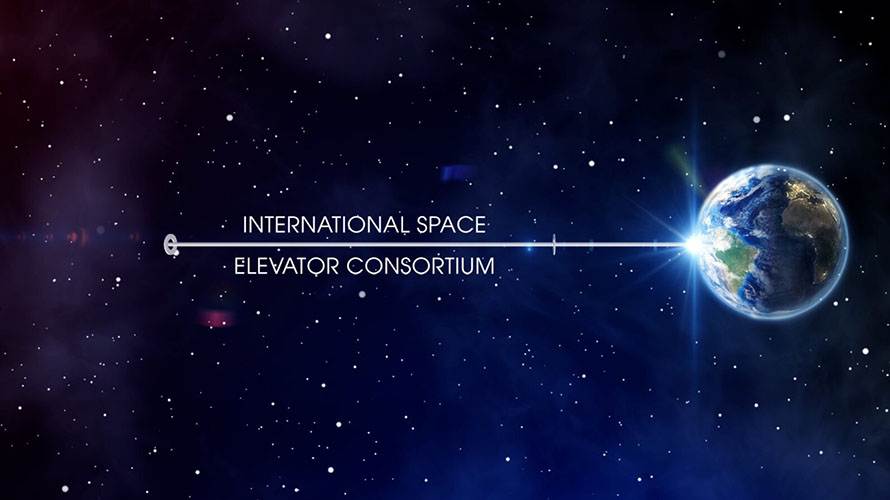The International Space Elevator Consortium is conducting a student challenge contest to create/describe a space mission that would be made possible or greatly enhanced by the use of a space elevator. The contest is for individual students or teams of up to four students from around the world (guideline ages 17-25). First prize is $2000. The contest will be in three phases as described below. The first phase is to submit an abstract of your idea, up to 400 words, by January 23.
Imagine an advanced lift system which raises 170,000 metric tons to space every year, the equivalent of 8500 Falcon Heavy launches, and with no atmospheric pollution. Space elevators would enable such massive movement of cargo to GEO and beyond in a safe, environmentally friendly, daily and routine way, at lower cost than rockets – thus transforming the approach for humanity to escape Earth’s gravity. Recent identification of a suitably strong material (single crystal graphene super laminate) to build a space elevator could make it a reality in your lifetime. What mission would you want to do with this system?
Select one “Mission” that would be important for humanity’s future and which would be enormously enhanced by relying on space elevators as a robust and “green” access to space. Explain how the space elevator’s transformational characteristics will achieve your chosen Mission: on Earth, on the journey to orbit, in orbit, or further out into space. Imagination will be appreciated but remember that everything in your submission must be based on well-researched facts.
For more information about space elevators and their capability visit isec.org.
Submissions will be judged based upon
- insight into future possible missions for space elevators
- the impact of the space elevators’ transformational strengths
- presentation of the arguments in favor of space elevators
- creative concepts for using space elevators that leads to a better future for humanity.
Phase 1 submissions must be in this format, submitted by January 23, 2023 to [email protected]:
- Title of Submission
- Team Member Name(s) and School/College(s) (One to four students)
- One Email contact
- Abstract (400 words or less, in English)
Semi-finalists will be selected and notified by February 15, 2023. Semi-finalists will be provided with access to the ISEC Zotero library to assist with further research for their paper. Phase 2 submissions will consist of a paper up to 15 pages PDF, in English, submitted by April 1, 2023. Finalists will be notified by May 1, 2023. Phase 3 submissions will consist of a video MPG up to 10 minutes in English by June 1, 2023.
First Prize is $2000, Second Prize is $1000, and Third Prize is $500. Winners will be announced by June 15. Prize money will be equally divided among team members and delivered by PayPal. Winning submissions will be published on the ISEC YouTube channel and other social media. Winners will be invited to present at the ISEC annual meeting.
The International Space Elevator Consortium (ISEC) promotes the development, construction and operation of a space elevator infrastructure as a revolutionary and efficient way to space for all humanity. ISEC is an affiliate of the National Space Society. For more information about the contest see https://www.isec.org/events/isecchallenge.




















3 thoughts on “Space Elevator Student Contest/Challenge”
Thank you NSS for helping to spread the word on this student challenge. We have great hopes of discovering new missions for the Space Elevator. The race to the end should be exciting. Best wishes to all who wish to take on the challenge.
Why not anchor it in Antarctica and the space portion above it with offsetting payloads?
Basic concept: The mass stays up because of the centrifugal force (outward force when rock is tossed around your head on a string). Earth spins, as result anything tied to it with a long cable will have that force outward keeping the mass upward. The question is how much mass and how far – current answer 100,000 km altitude based on equator so it can rotate with Earth. The end mass is “tossed outward” – thus keeping tension on the cable so it will not fall. If you go straight up from the pole, no rotation and it falls back down.